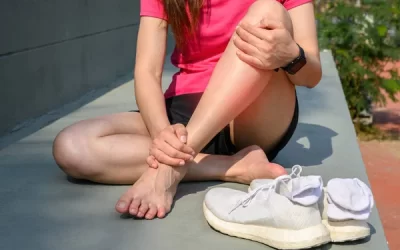Physical Therapists stand at the ready to help with the Opioid Crisis
Did you know that Physical Therapy is a profession that was actually birthed out of national crisis situations? In 1917, the US War department’s surgeon general saw the great need for a special group of people who could intervene to help injured soldiers during World War I. His attention was drawn to England where education was being given to young women in teaching them how to help with the traumatic injuries of war. The United States sent a young woman, Mary McMillan, to receive this education and to return and begin a program here in the US. She became the first “physical therapist” in the United States. The early physical therapists were called Reconstruction Aides. 86,000 soldiers were treated from 1918-1920. Proving that many men could be returned to useful lives avoiding serious disability, the principles of physical therapy became so definitively established that civilian hospitals began to provide a staff of such workers. The field continued to grow even more after World War II. The national crisis of the Polio Epidemic also found the US medical system in need of skilled individuals to address the physical needs of children and adults recovering from polio. Dr Robert Lovett, an orthopedic surgeon dealing with the aftermath of polio conceptualized the “team approach” to rehabilitation for polio and he united doctors, nurses, physical therapists and brace makers to work together to help address the polio epidemic.
Today, physical therapy has evolved into a healthcare profession that requires a doctoral level of education and can address individuals with catastrophic injuries and disease as well as musculoskeletal injury, neurological disorders, children with developmental delays and those individuals with chronic pain issues. Physical Therapists are active in the research arena and continually refine the best of rehabilitation practices for multiple types of patients and settings. In recent times, however, there seems to have been a shift away from collaborative efforts as our health care system is undergoing much shifting and consolidation and health insurance companies are running the system rather than healthcare professionals. Cost should be always be a concern but should never become the driving force of what the best care for people truly is. Due to nature of these economic shifts, there has developed somewhat of a lack of communication/collaboration across multiple medical disciplines. Physical therapy should be recognized as a potential front runner in helping people deal with injury and pain. The pharmaceutical world has developed tremendous advances in treatment for disease but when it comes to pain from musculoskeletal injury or post surgery, it has put our country into another type of epidemic. Currently, our nation finds itself in –The Opioid Addiction Epidemic.
Just like the reconstruction aides of the world wars and the early physical therapists providing care to those with polio, we stand ready to address our nation with this crisis. Rehabilitation specialists – physical, occupational therapists and assistants are 500,000 people strong. We spend on average 30 or more minutes one on one with our patients per visit. Our expertise has always been the human body in relation to movement, function, and pain management. Our skill set is highly trained and we know how to modify treatment for a variety of diseases. Our services are cost effective and patient focused. Fitness personnel and personal trainers do not receive the level of expertise that rehabilitation specialists dedicate years of their life to learn. They may do well with well functioning bodies but those in pain or chronic pain would best benefit from the physical therapist’s guidance. Through all these years, the original motto of the reconstruction aides can still be applied: “Return the patient to duty or to his rightful place in society in the shortest time by the best means possible.” The question now is will the medical system remember who they have in the wings to call to work on this and will the insurance companies see the value of what we have to offer at this moment of time in our nation’s history? Thankfully, the medical system is re-evaluating what it has to offer.
The US Surgeon General, Jerome Adams, MD, MPH addressed a group of leaders in the physical therapy field in January 2019 and encouraged those in the physical therapy profession that the medical system is beginning to see the need for more collaborative relationships with the physical therapy field. He highlighted the need for partnerships in helping the public health of the nation. Of particular concern is the need to turn the tide on opioid abuse. “It’s an indisputable fact that physical therapists are well-positioned to change the culture around pain management” he said. Adams also told the audience, “Physical therapists are key to overcoming not only the opioid epidemic but in creating healthier societies. Know that you have no bigger fan than the United States surgeon general.”
Does history repeat itself? Once again we are at a moment in time where a surgeon general sees a great need and the need for the right people to address this need. Thankfully, we do not have to go the England this time. We already have the skilled professionals at the ready. We just have to send patients to them. Physical therapists want to help and we need to step into addressing this issue for our communities and for our nation. Optimal Physical Therapy and Sports Performance wants to help and we want to collaborate with physicians to address the chronic pain issue and needs of patients and to prevent chronic pain in the first place. If you or someone you care about is dealing with pain, chronic pain or opioid issues, give us a chance to help. Our phone number is 724-779-1300.



